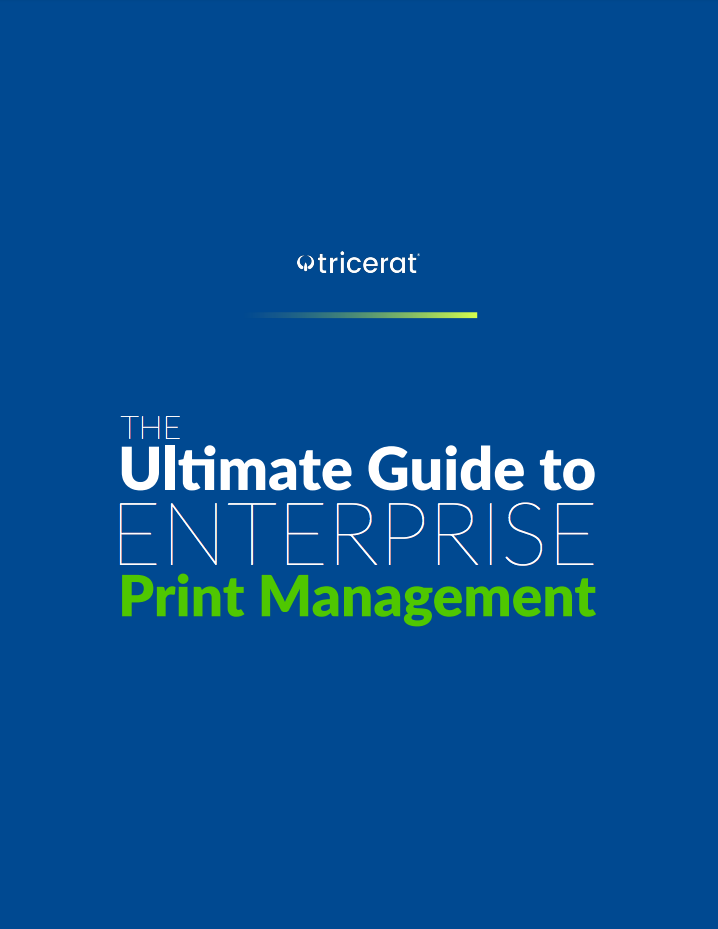
The healthcare industry has come a long way in recent years, especially when it comes to technological advancement and innovation. More and more frequently, healthcare organizations are increasing their attention to the supply of solutions rather than products or services. Things like artificial intelligence technology, medical research, efficiency technologies, and IoT for medical devices (IoMT) are gaining more traction in the industry. Budgets are tight, but higher levels of care are expected from healthcare organizations, so it's important they embrace new technologies that offer both higher efficiency, and the potential to lower costs.
Learn More About Adding Efficiency Through Print Software
It’s no secret that there are many manual processes are still in practice in medicine, but many of these are inefficient and cost healthcare companies time and money by slowing down the medical process for patients and providers. There have been improvements to electronic medical records, but in terms of time-savings and patient care, these improvements are little better than the old paper charts. True enhancements to the medical technologically will increasingly come from advanced analytics and machine learning technologies.![]()
Artificial Intelligence (AI) is advancing computing in almost every aspect. Machine learning and robotics have the potential to make huge impacts in the medical field and patient care, particularly as they become more widely available to medical professionals and researchers. Recently, Google has developed a machine learning algorithm to identify cancerous tumors, and Stanford created a deep learning algorithm to identify skin cancer.
But AI isn’t just applicable to cutting-edge diagnosis of patients. AI systems can improve general care management, speed up drug recovery, and perform many other essential functions and tasks. Budget constraints are a factor that often limits technological advancements in healthcare, so it’s important for healthcare organizations to be able to achieve ROI through implemented technologies.
Learn More About Achieving ROI Through a Print Management Solution
Google and Stanford aren’t the only organizations who are developing early diagnosis AI technologies. There are AI systems that can predict heart attacks, or test for conditions without the use of traditional blood tests, and even a chatbot that can identify different medical conditions. These tools can reduce human errors associated with diagnosis and treatment, thus allowing doctors to spend more time with patients and reducing costs associated with medical tests and incorrect diagnosis.
Read More about AI Technologies in Medical Diagnosis
IoT for medical devices (IoMT) is the connection of medical devices through the internet. It is an area with significant growth that will help contribute to the success of the other trends. Forecasters suggest that IoMT will grow within the healthcare industry by over $150 billion. IoT devices are used to monitor patients well-being remotely, and can be monitored through the development of new healthcare apps. Things like fitness, blood pressure, glucose levels, heart rate, and other vitals can all be monitored through these IoMT wearables. Although not strictly AI technologies, IoMT devices all contribute to reducing healthcare costs by allowing doctors to devote more time to patients and monitor vitals more quickly and efficiently, therefore improving patient health, patient engagement, preventative care, and care management.![]()
One byproduct of these trends is that healthcare systems are expanding in both scope and location. Applications for staff are often delivered through a mix of cloud technologies, virtualization platforms in the datacenter, and traditional computing methods. Even as applications and data are mixed between platforms, system administrators and users must find ways to make this a cohesive delivery and improve functionality instead of diminishing it. Tricerat's software offers a way for administrators to easily combine these technologies and more, and even support mobility, security, and remote access.
Tricerat's Simplify Printing gives administrators the control to dynamically assign printers based on user, device, or environment variables. This capability delivers the right printer to the right person every time, even as people move around a hospital or between facilities. Injecting intelligent assignment into what is normally a static process helps drive user productivity and simplicity. For healthcare organizations, this simplified process offers a high ROI, as both IT administrators and medical personnel can focus on higher-level tasks. This also provides augmented care and efficiency for patients, as their healthcare providers can spend more time with them, and the overall process moves quickly and seamlessly.
